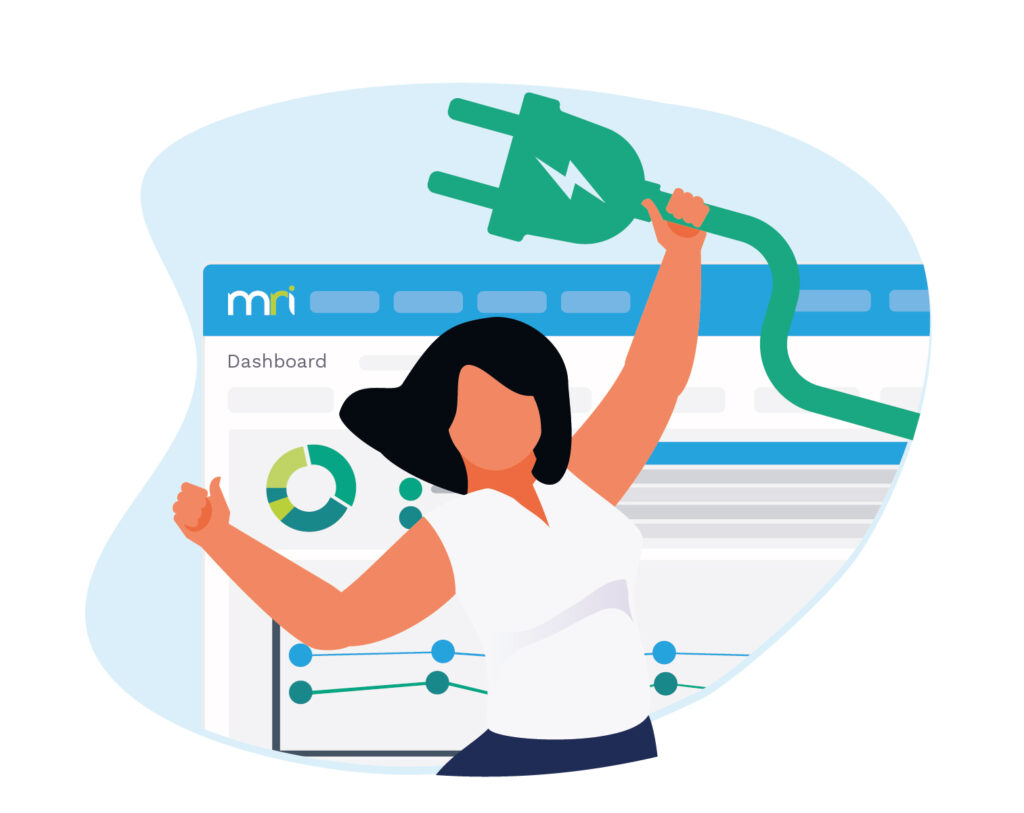10 real estate sustainability trends in 2023
Competition is always improving and the need to stay ahead of the curve is always present. As the climate crisis is more consistently at the forefront of many people’s minds, the adoption of sustainable practices and implementation of eco-responsible technologies is a key area in which new developmental strides are being taken.
Market trends show that many prospective tenants are including sustainability as a crucial driver within their property rental criteria and therefore property managers and landlords who are investing in sustainability across their portfolios are more likely to keep pace with both tenant demand and competitor performance.
Building sustainability into properties can also bring social benefits, particularly to social housing providers, in the form of lower energy costs and improved living conditions, building new sustainable tenancy models.
In this blog, discover the top real estate sustainability trends to watch in 2023, including the rise of net-zero buildings, green leases and more.
The top 10 real estate sustainability trends to watch for in 2023
1. Green leases and how AI lease extraction plays its part
What are green leases?
Usually associated with commercial properties rather than residential, green leases, in addition to the usual standard clauses, contain a series of added commitments on behalf of both the landlord and tenant to make improvements to the property from an environmental point of view. This can include:
- Water efficiency and consumption
- Energy usage
- Waste reduction
- Travel to and from buildings (including facilities to enable safe eco-friendly travel, e.g. bike storage, e-car charging points etc.)
- Sustainable materials used in fitting out, refurbishing or altering the property.
How artificial intelligence supports green lease reporting
By 2030 there will be more stringent regulations for building owners, managers and occupiers in relation to environmental impact and sustainability. For example, the MEES are tightening regulations and commercial properties will need to achieve a minimum energy performance certificate (EPC) rating of B.
Therefore, to prove compliance with their lease clauses and with tightening regulations, organisations will need to be able to demonstrate their sustainability based on a number of different clauses. For example, they may need to be able to evidence that its HVAC system is operating at a certain level.
AI lease extraction software will pull all the necessary information (i.e. energy usage data) from a range of documents such as utility bills, thereby enabling an organisation to have a full and accurate picture of its performance. This will mean that organisations can provide, at the touch of a button, the relevant data for reporting purposes i.e. they can confirm yes or no to each ‘green’ clause and prove compliance with X% of total clauses.
2. Data-driven sustainability
In 2023 and beyond, we will see increased focus on the collection, management and analysis of environmental and sustainability data to meet ESG targets and other regulatory requirements.
To facilitate this, AI lease extraction technology will enable an organisation to access and improve its sustainability performance with accurate and transparent data. This works through the fast and precise onboarding of lease and contract information, including critical terms and information, directly into core management systems.
This creates comprehensive audit trails and advanced analytics, providing complete visibility of all information across property portfolios.
While there is no official benchmark in relation to ESG performance and sustainability, many organisations work towards GRESB standards.
3. Smart building automation
As buildings become smarter by utilising modern technology to produce valuable performance data, 2023 is seeing the integration of more automated utilities within the fabric of properties.
This includes:
- Optimised maintenance – the deployment of preventative maintenance tools to analyse data, recognise trends, flag any anomalies or operational discrepancies that might indicate a fault before it disrupts normal operation.
- Energy efficiency – using sensors and occupancy trends, facilities can be automated and optimised for efficiency. For example, climate control can be automatically adjusted to account for the number of people in the building. Small adjustments such as this can incrementally improve performance and cut operational costs significantly over time.
- Reliable internet – smart buildings leverage an internet of things (IoT) to gather performance data and facilitate automation, therefore a reliable internet connection is vital. Safeguarding a reliable internet connection means designing buildings to ensure there are no internet black spots, including ethernet wiring throughout the building and implementing back up Wi-Fi should ethernet connection fail.
4. Circular economy models
Circular economy is a framework designed to tackle global challenges including climate change, biodiversity loss, waste and pollution. In construction and property management, circular economy principles include:
- Designing buildings that produce low/no waste or pollution through construction and operation
- Circulating products and materials at their highest value
- Regenerating the natural environment.
Recent research by ARUP and the Ellen MacArthur Foundation has found that following circular economy models and ensuring material efficiency has the “highest emissions reduction impact, followed by enhancing building utilisation” on the building development sector.
5. Circular water systems
Water usage is a key factor in sustainable operations and circular water systems are being more widely adopted in 2023. Technologies are being implemented that introduce a circularity to water systems, meaning that contaminated waste water is purified and reused, valuable elements from wastewater such as energy and nutrients are recovered, and natural water systems are preserved and regenerated.
Grey water systems, such as those that use shower water to flush toilets or rain water to power industry are an increasingly common example of circular water systems, allowing for the recovery and reuse of water, reducing the amount of waste and optimising operations.
6. Regenerative design
In 2023, we’re seeing more developers seeking to instate regenerative design principles into their buildings. Different to sustainable design, regenerative design aims to create buildings that positively impact the natural world, contributing back to the ecosystem.
This might include:
- Green skins – while green roofs and living walls are growing increasingly common, architects are now designing building with “green” skins that purify the atmosphere and sequester carbon.
- Energy production – creating a micro-grid for a building or neighbourhood through the implementation of renewable technologies such as solar panels and wind turbines, to reduce reliance on larger utilities and even contributing to wider local energy grids.
- Thermal efficient construction – using design and construction methods including Passive House, thermally efficient buildings are constructed to create indoor climates that are naturally reactive to seasonal weather systems (i.e. keeps interiors cool in summer and warmer in winter) rather than relying on powered HVAC systems.
7. Net-zero buildings
As governments globally are working towards the Paris Agreement of being net zero by 2050, real estate and property developers are playing their part. Net-zero buildings are designed to be optimally efficient and either contribute no carbon whatsoever to the atmosphere at all, or remove carbon from the atmosphere equal to or greater than the amount it generates.
Many net-zero buildings:
- generate their own renewable energy on-site via wind turbines, solar panels or other renewable energy generation methods;
- include green roofs, green skins or living walls to purify the air, or include other carbon reducing technologies;
- and are optimised to reduce waste and use energy efficiently.
8. Carbon neutrality pledges
In 2023, many businesses are making carbon neutrality pledges, promising to reduce their carbon usage and offset emissions to reach a net-zero carbon emission organisation.
Making a pledge in line with the Paris Agreement timeline, to reach carbon neutral operations by 2050 means ensuring robust management and reporting. It requires the measurement of emissions, implementation of technologies and practices to reduce emissions and strategies to ensure any unavoidable emissions are offset. The use of sustainability management software is vital in this endeavour.
Carbon neutrality pledges are a great to way to demonstrate an organisation’s commitment to sustainability and environmental responsibility and imposes an obligation to measure and report on progress.
9. Energy storage solutions
In 2023, many property organisations are implementing energy storage solutions. Optimising renewable energy technologies through on-site energy storage means that buildings can become more self-sufficient and less reliant on larger energy grids. Through energy storage solutions, property managers and landlords can drastically reduce energy costs and ensure that excess energy produced by weather-dependent renewable technologies such as solar panels and wind turbines can be stored for quick deployment during lower generation periods or at peak demand times.
10. Decentralised energy systems
Being widely adopted by local authorities as energy prices rocket, decentralised energy systems involve locating energy production facilities closer to houses or blocks that will use the energy generated. This brings down prices, which means the promotion of more protected, sustainable tenancies. It also allows for optimised usage of renewables, which cuts carbon emissions and reduces reliance on larger grids. Schemes can serve a single building or housing block or can even be built to serve whole cities.
How MRI Software can help you drive sustainability in your business
At MRI Software, we’re passionate about helping you leverage technology to meet sustainability targets and drive greater operational efficiencies. Contact us today to find out more about how our energy and sustainability solutions can accelerate your vision for sustainability.

Achieving audit readiness: Navigating IFRS 16 in the public sector
As the public sector grapples with the complexities of IFRS 16, ensuring audit readiness becomes paramount. Join us for an in-depth exploration of the key challenges and best practices tailored specifically for the UK public sector. In this on-demand…

